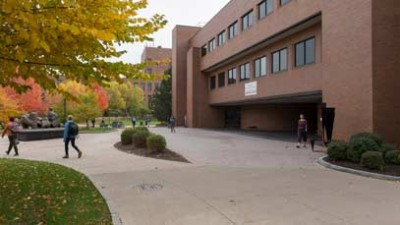Undergraduate Capstone Conference
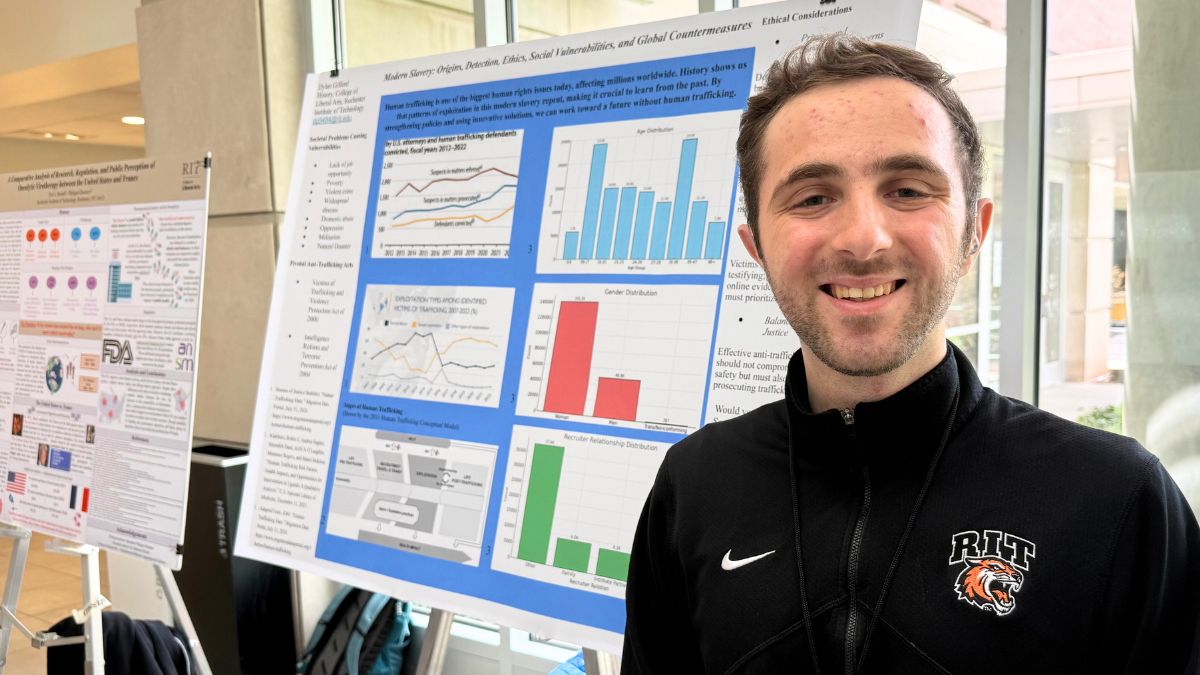
Undergraduate Capstone Conference
Contact
The College of Liberal Arts is pleased to invite you to our annual Undergraduate Capstone Conference, featuring the research and senior capstone projects of students in our bachelor of science programs.
The event will be held virtually on Friday, May 7th, 2021. Start times vary by department.
Please click on the departments below for the appropriate registration link and to view student project abstracts.
Project Abstracts by Department
Session I (8:30 a.m. | Register to attend: http://cglink.me/2d1/r993435)
Destiny Cowans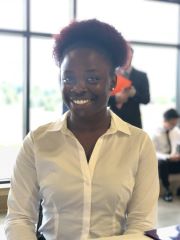
Depictions of males in television series for young adults: A Quantitative Content Analysis
A content analysis was conducted to document portrayals of males with the last 10 years in television shows targeted towards young adults (13 to 19). Two episodes from 10 different shows, aired between 2010 and 2020, were randomly sampled and coded for. Following previous research, this analysis examined representations of men in the areas of dominance, sexualization, occupational abilities, and toxic masculinity. Contrary to the amount of progress many think society has made, the findings of this study suggest that gender stereotypes in males persist (e.g., male dominance). It does appear that some things have changed when compared to previous decades, like the shift from over-sexualization of women in television to males. These ideas are discussed and viewed through the lens of cultivation and social learning theories.
Paula Hernandez
Digital Eats: An Analysis of Representation in Food Media Content on Instagram and YouTube
Food serves not only as nourishment but as a system of communication. Depending on where it comes from, how it’s made and, even who makes it, its meaning is determined by its history and background. Today, digital food media outlets help spread a message of diversity and outreach while enabling multiple cultures to be represented through food. This qualitative study focuses on how cultural representation is portrayed (or not) in digital food media platforms and analyzes the interactions, topics and, themes that arise with this type of content while establishing the differences in its structure on Instagram and YouTube. To assist in the analysis, the media framing and communication accommodation theories are used as a way to determine how this material is presented and interpreted through the different media sharing platforms.
Wyatt Kinsey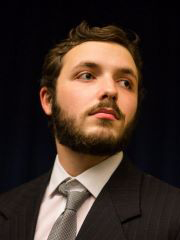
When Policy Gets Parasocial
A sizable amount of research has been done on how social media influencers form one way, or parasocial relationships with their followers. These relationships are often used to get the audience members to buy certain products through sponsored content and ads. Meanwhile, in an increasingly online world, politics has moved its way onto social media. Many politicians have taken to Twitter, Instagram, and more to reach out to potential voters in ways that make them seem approachable and down to earth. These politicians have the potential to form the same parasocial relationships with their followers that social media influencers do. However, instead of selling a product to their audience, they’re pushing ideas and policies into the minds of potential voters. This political parasocial relationship has gone unstudied in media, and deserves a closer look.
Alexis Wetzel
Body Image Among Male College Students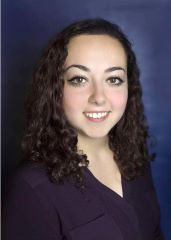
Individuals have been comparing themselves to others for many years. This natural human behavior can be studied through social comparison theory. Over time, the media has played a significant role in influencing consumer’s opinions on what the ideal man and woman should look like. The thin-ideal for women and the strong “ripped” body ideal for men. Cultivation theory and social comparison theory have been used to discover a connection between media consumption and body dissatisfaction. Cultivation theory suggests that heavy media viewers are more likely to perceive the real world as what they see in the media. If a consumer's life is similar to the life that is portrayed in the media, then that media will have more of an effect on them. This study looks at Instagram as the specific medium for social comparison. Male college students will be the focus of the study. This quantitative study aims to determine how three main factors: social media, body satisfaction, and self-esteem impact male body image.
Ali Johnston
TikTok and Politics: Social Judgement Theory as it Relates to Gen Z’s Political Dichotomy
This study aims to better understand Gen Z’s political involvement on TikTok through the lens of Sherif’s Social Judgement Theory. It investigates how one’s commitment to their political anchor point is tested after viewing similar and dissimilar political material on TikTok and the role ego-involvement might play in that commitment. Participants were first asked questions related to their personal levels of ego-involvement. Afterwards, participants were shown three TikTok videos representing different political ideations and asked to answer a series of questions assessing their commitment to their political anchor point and likelihood to listen to opposing political arguments. Ultimately, this study found no significant correlation between level of ego-involvement and commitment to one’s political anchor point. However, significant trends suggest that participants’ commitment to their political anchor points could be strengthened by videos demonstrating not only the same, but strongly opposing beliefs. Other significant trends suggest that participants were more likely to rethink their current political beliefs when presented with opposing beliefs using a more moderate and unbiased tone, rather than emotion and argument.
Emily McIndoe
Court of Public Opinion: Perceptions of U.S. Trial Court from the General Public as Shaped by the Media
This study aims to discover and explore the relationship between the judicial system and how the public’s opinion on the judicial system is shaped by the media. One aspect of this study is to see how the media mediates opinion of the general public as the judicial system is a closed system. The only time individuals are able to see the judicial system in works is either in person via jury duty or through the lens of the media. The study looks specifically at the United States and uses the variables of media exposure, media credibility, procedural drama and legal dramas.
Session II (10:30 a.m. | Register to attent: http://cglink.me/2d1/r993601)
Kiana Simons
Influence and Perception: Attire and You
Chris DeGennaro
Is the Book Always Better?
The purpose of this study is to observe the levels of immersion and enjoyment between books and movies. To get the most accurate data on this relationship, this study uses famous American franchises like Twilight and the Hunger Games that are staples in pop-culture. These franchises have well-written and well-received novels and movies that have a direct correlation with each book. The movies are direct adaptations of the books and tell the same story to be as exact as it can be. For the purposes of this research, the only requirement for a franchise to be included is there must be at least three books and three corresponding movies. There are multiple franchises that are similar in books and movies, they are the perfect subjects for the purposes of this study.
Mary Rae
Color Theory: Is it Accurate?
This qualitative research explores color theory and its application in the world of retail. The purpose of this study is to explore an area in advertising that has very little research. Branding and color goes hand in hand in terms of messages but the reasons for this have not been explored. The questions this study sought to answer were, “Is there a relationship between color preference and color connotation?” and “Do individuals find different color preferences for different types of retailers?” required for the research conducted to be qualitative. In this study, data was collected through semi-structured interviews conducted with 7 students at RIT to discover how they view colors and applied them to retail. Results yielded a similar mindset in most participants when it came to application of colors even though their preferences were all vastly different. A few themes emerged from the data collected: the word “vibe’, ocean/sky relating to the color blue, happiness relating to the color yellow, and McDonald’s when related to retail with red/yellow branding. The overall results showed that the design majors knew more about color theory than non-design majors.
Demare Hanks
Under the Influence Market: Understanding the Relationship Between YouTube Influencer Market and Engagement of College Aged Viewers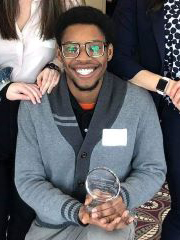
This study is aimed at exploring the relationship between Youtube Channels and viewer mobilization. Compared to traditional channels, new media like YouTube have algorithms that regularly suggest content to viewers, so understanding of the relationship between viewers and this content is essential in current communication research. The study will focus on mobilization, the ability for YouTube channels and influencers to push and pull viewers to other events, platforms and monetization opportunities. Studying Youtube as a platform and using specific targeted questions, we can determine what factors contribute to both physical and virtual mobilization of users.
Ashley Rezendes
The Psychology Behind how we Interpret Advertisements
This study aims to answer the following research questions: Does lighting, color, and context play a role in interpreting advertisements? When taking a company or product globally to a non-english speaking country, does context play a role in how others will interpret the adDoes the “tone” (+/-) play a role in how we perceive an advertisement? I ultimately want to see if two people can look at the exact same advertisement or image and have co completely different interpretations of what they are looking at. I interviewed 20 participants from Rochester, NY ages 18-23 and then 5 international, spanish-speaking, participants ages 18-23. I chose this demographic to consider what factors we must consider when going internationally and look at how international participants interpret the same images as the US participants saw.
Session III (1:30 p.m. | Register to attend: http://cglink.me/2d1/r993618)
Nick Jodlowski
Blackpink in your Area: A Rhetorical Analysis on the Globalization of Korean Pop Music
Over the past decade, Korean Pop Music (K-Pop) has become a global phenomenon, reaching success in difficult markets such as the Japanese and US music markets. Previous researchers credit K-Pop’s success to its cultural hybridity & the rapid growth of social media. This paper focuses on analyzing K-Pop and how it managed to reach the levels of being a globalized cultural product for South Korea. While previous research focuses on the political, or economical side; this paper focuses on K-Pop as the product of analysis. Analysis includes looking into Social Media, interviews, awards and accolades of idol groups, and the music itself. Groups that will be analyzed are groups that managed to gain success globally and locally to understand K-Pop’s globalization at such a rapid pace.
Darrin Majocha
Priming and Signing: Observing the Effects of Priming on Non-Proficient Signers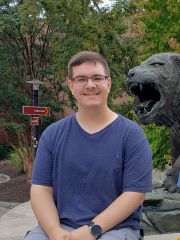
American Sign Language is a visually rich language that involves the use of hand signs. When referring to hand signs of nouns, they refer to aspects of the "referent" noun/object such as physical characteristics. In this study, I wanted to see if priming theory, a mass communication theory, could be used to offer a unique perspective in terms of learning American Sign Language or easing non-proficient signers into the language. Priming theory is a mass communication theory that refers to how mass media influences a general audience’s decision-making and judgment using diverse types of media. For this study, I shrunk the scope of priming theory down to the individual level. I created a survey where I primed both proficient and non-proficient signers with images of concrete nouns followed by eight diverse hand signs. The goal was to see if specifically priming non-proficient signers will allow them to provide a greater chance of guessing a hand sign they have never seen before while also looking at their confidence and amount of time guessing each hand sign. Through my data, there are significant findings that priming did influence a vast number of participants and help them accurately guess a variety of hand signs correctly. Although not every sign yielded equivalent results, the data shows promise as to whether it is efficient to prime non-proficient signers.
Jillian Walton
#$%@!: Language Reclamation in the LGBTQ+ Community
Words can be reclaimed by communities in many ways, in many different capacities. Language is an important tool for communicating and the words we choose to use hold significance. Exploring these mechanisms of reclamation, as well as the degree of acceptance that these words received within a community, is therefore important in understanding the perceptions that people have about themselves and others. The aim of this study is to understand how words can be reclaimed within the LGBTQ+ community by looking at the exposure of LGBTQ+ language and whether this language shapes perceptions of self. Analysis of interview responses suggest that reclaimed language is used in a positive way on social media platforms and that LGBTQ+ people should be able to reclaim this LGBTQ+ language.
Travor James
William Edgars Cultural Mandate: A Narrative Analysis of the Nature and Purpose of Cultural Activity in William Edgar's Biblical Theology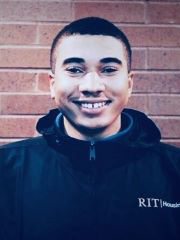
William Edgar, in his book Created and Creating – A Biblical Theology of Culture, contends for the “Cultural Mandate” paradigm, a Christian framework for understanding humanity’s mission to promulgate culture through the world. This mission is grounded in the mandate of God given to Adam and Eve in the book of Genesis and carried through the story of the Bible, culminating in the Great Commission of Christ to his apostles. Walter Fisher’s narrative paradigm is used to distill the narrative and persuasive contours of Edgar’s framework to determine his persuasive goal. This critical study engages with Edgar’s “Cultural Mandate” narrative, with Walter Fisher’s paradigm as a method for answering two research questions: (1) In William Edgar’s Biblical Theology, how is the “Cultural Mandate” defined, and what are the narrative dimensions of the “Cultural Mandate” concept in his study of the Biblical story from a Christian perspective?; and (2) In Edgar’s view of the storyline of the Bible, how does the “Cultural Mandate” find its final recapitulation in the “Great Commission”, and how does this culmination frame his Christian view of cultural engagement, activity, and his rhetorical goal in unfolding this narrative? Research found that Edgar’s Christian narrative grounds cultural activity in the speech of a divine creator to human creatures. Their fruitfulness in bearing out that good mandate in the world depends on their right relation to the creator. Furthermore, the commission to make global disciples under the authority of the divine-man Christ is the culminating setting for rightly-oriented cultural promulgation.
Brooke Wolfenbarger
Understanding the Experience and Engagement of Audience Members Watching Movies in Theaters Versus at Home
This quantitative study aimed to look at the relationship between audiences and the environment in which they watch movies. Whether they choose to watch movies at home using streaming platforms or going to a movie theater. This study used Uses and Gratification Theory as a stepping stone and specifically used the factors pass time, convenience and entertainment for examination. This study looked at three different relationships when it came to where audiences watch movies. The three variables that were measured were enjoyment, engagement and escapism. Between these three variables there was the biggest difference when it came to engagement, which theater had the most engagement. Evidence from the study does suggest though that how many movies a person watches has some effect on their relationship between them and the environment they watch the movie.
Session begins at 9:30 a.m. | Register to attend: http://cglink.me/2d1/r993587
Koda Drake
A Type of Preservation: Modern Recreations of Typefaces at Genesee Country Village & Museum and the Cary Graphic Arts Collection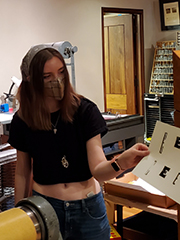
Historical objects that serve educational and interpretive purposes face frequent use and can easily be damaged, particularly when those objects are designed to be disposed of following high usage. Conserving these artifacts through both digital and physical reproductions enables museum staff, scholars, and the general public to tell a more complete history of the objects and of material culture. To demonstrate the necessity of preserving functional artifacts, this thesis examined historic wooden typefaces used for document printing to answer the following question: do digital and physical reproductions of wood type fonts allow for preservation of the original fonts while maintaining an authentic, participatory experience for visitors? By working with the collection of typefaces at Genesee Country Village & Museum in Mumford, New York and the Cary Graphic Art Collection at Rochester Institute of Technology, I recreated damaged types with methods tested by scholars of printing history to demonstrate the value of physical and digital reproductions. I also showed how such efforts enable museums and other collecting institutions to view type as both an art form and a means of production. This research contributes to the ongoing discussion on the use of facsimiles in the museum space for exhibition and educational purposes and the conversations surrounding authenticity in museums.
Amara Engel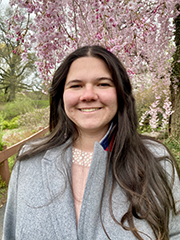
Museums Accessibility Services For Deaf Visitors
Since the passage of the Americans with Disabilities Act in 1990, museums have invested more effort and energy into addressing accessibility issues. The issue is that museums only give out limited options that might not fit with the visitors’ needs. For Rochester, as an American city with a large deaf population, local museums face a particular issue about how to make their spaces accessible for both deaf and hearing visitors. Museums in Rochester provide many ways for Deaf visitors to gain rich experiences. National Technical Institute of Deaf (NTID) has its Deaf gallery to allow Deaf artists to show their pieces without accessibility issues. This thesis will provide a point of view to the readers to remind them that visitors do have their preferences to be able to enjoy the experiences such as interpreters, Closed caption, visual hand-on activities, and the rest of the available services. How can museums reach out? In that case, the survey will provide an idea of what visitors would like to use as their preferred form of accessibility to gain more knowledge as they visit the museum. Overall, the museums should be able to reach out to support their visitor’s needs. I will be comparing a couple of different museums to show what they have in common and differences. Then I will display which museum did best for others to follow. That way museums can truly understand what deaf visitors would like to have as access services.
Courtney Barber
Controlling Artistic Identity-Artist v. Museum: A Case Study of KAWS at the Brooklyn Museum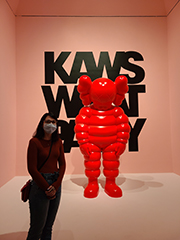
Through contemporary social media applications, non-traditional artists now hold the ability to curate their own artistic identities and associated brands. Accordingly, the constant use of social media platforms and consistent reinforcement of familiar artistic styles and characters, have become linked to the artist’s relationship with their public following. In the case of the street artist KAWS, the artist has strategically built the familiar foundations of his public persona upon the repeated use of the character Companion, frequent social media interactions, and consistent brand collaborations. In bringing an artist utilizing such contemporary methods into the traditional museum space, it can be questioned whether the institution will simply serve as yet another public platform for the creator to further establish their identity and brand. This phenomenon is further explored through a case study of the career-spanning exhibition, KAWS: WHAT PARTY, located at the Brooklyn Museum through September 2021. Through his strategic brand marketing, KAWS has come to exemplify the question of whether museums continue to function as the public’s primary exposure to art, or if they now stand as venues for artists to market themselves. Through visiting the exhibition, I evaluate how the aforementioned strategies are used to reinforce the identity that KAWS has already established for himself, and his brand. As a result of these evaluations, I determine the ways in which KAWS uses the KAWS: WHAT PARTY exhibition as yet another platform to perpetuate his artistic identity, and recognition of his brand.
Katie Keegan
From Darkness to Light: Bringing Collections Out of Storage at the History Center of Tompkins County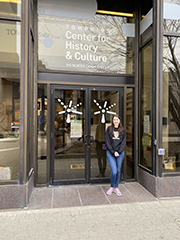
One of the museum's important missions is collecting objects and artifacts to store, preserve, and display. Today, however, museums only have a small portion of their objects out on display. Large institutions have the funds to buy and create new spaces to display more of their collections. With small budgets and small spaces, however, smaller institutions do not have this luxury. I wish to find different ways to bring out collections from storage into the public eye to better serve the community. I apply my investigation to a case study of the History Center in Tompkins County, a local history center in Ithaca, NY. The case study is informed by my internship experience there over the past summer and work that will continue throughout the rest of this year. I will be furthering my thoughts by analyzing a digital exhibition about quilting. In addition to incorporating my first-hand experience with the History Center, this thesis will provide recommendations for bringing collections out from storage. These will include online exhibits, social media usage, marketing, and deaccessioning/loans between institutions. The overall goal of this research is an outline of action for how the History Center can bring artifacts out of storage or make them accessible to their audience. This plan can also serve as an outline to other small institutions.
Brian Zabawa
A Beginner's Guide: An Educational Card Game for Teaching the Basics of How a Museum Works
The purpose of modern museums is to collect, preserve, interpret, and display objects of artistic, cultural, or scientific significance for the education of the public. As a student this definition could mean many things. To some students, museums may be just a tourist attraction, a basic educational tool, or a place meant to better the community. These descriptions may all be true, but the deeper you look at a museum’s basic functions the more you begin to understand all the nuance that goes into keeping a museum running smoothly. With this project I aim to create a card game that can be used by those members of the public and students with little knowledge of how museums function. By using accurate reflections of a museum director’s responsibilities, I aim to assist in the education of aspiring museum professionals by creating a fun way to learn what museums do on a day-to-day basis. By familiarizing these groups with the more in-depth functions of the museum I aim to see an increase in interest for museum professional positions.
John Adil
Charting Virtual Reality Experiences in Museums
Virtual Reality (VR) has become more widely used within the museum in the past 10 years because of the benefits of this technology, which include creating an immersive space unique to the property that draws a user through an imaginative landscape, stimulating their senses in a way traditional technology can’t. Large institutions have undertaken extensive, multi-team VR exhibitions to great success; unfortunately, there are barriers when it comes to implementing VR in smaller institutions with lower budgets. Virtual reality as a tool has not been widely considered in the museum scape because of these barriers such as time, money, access to tools, and in-depth knowledge in design and coding. Through surveys and interviews with museum professionals and experts in adjacent fields, this thesis investigates how museums can overcome these barriers, giving them the ability to implement VR in a meaningful way. Through research, a set of recommendations will be created addressing the ways an institution can utilize VR to its best abilities in a cost effective manner. By addressing the barriers that many museums face when it comes to technology, VR could become a valuable tool for the museum scape as a whole.
Session begins at 11:30 a.m. | Register to attend: http://cglink.me/2d1/r993614
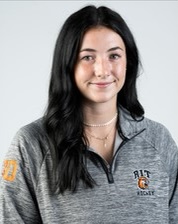 Jessi O'Leary
Jessi O'Leary
Effects of Emotion Regulation, Coping Style, and Stress on Alcohol Consumption in Student Populations
Alcohol use is common among college students and college student athletes. This study used the CISS, DERS, DMQ-R and an alcohol consumption questionnaire to examine the correlations between stress, emotion regulation, coping styles and drinking motive. It has been hypothesized that students who score higher for emotion focused coping, avoidance coping, emotional dysregulation, and stress will score higher on the measure of problematic drinking. It was also hypothesized that to the extent that varsity athletes experience added stress, we expect a relationship between varsity athletes and stress, which will in turn be a significant predictor for maladaptive drinking. The results showed that participants who scored higher for emotion focused coping, scored lower on the alcohol audit. Participants who scored higher on avoidance focused coping, scored higher on the alcohol audit. Overall there were no significant differences on the PSS between athletes and non athletes, however there was a significant difference between the scores on the audit. Student athletes were more likely to engage in problematic drinking. Non athletes were more likely to score lower on the audit, when they scored higher on the PSS.
Samantha Burgos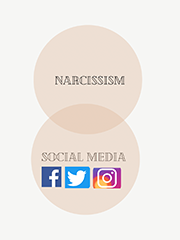
Social Media and Personality
Each and every post made by an individual on a social media platform relates to a goal-oriented behavior or motivation on the part of the person who posts it. Potential motivational roles for posting on social media can include for the purposes of creativity, documentation of exciting life events such as travel or attending sporting events, surveillance of others and their activities, and for personal growth. The purpose of this study is to examine the different motivational roles behind how college students use different social media platforms including Instagram, Facebook, and Twitter, and whether those motivations are related to their personality traits, particularly levels of narcissism. Participants were 60 RIT students, who took a survey measuring personality, with a focus on levels of narcissism, and a survey measuring both their amount of social media use and their motivations for using social media. Motivation questions were divided into less- and more-problematic types. Results compared groups of participants with low and high levels of narcissism and found there were some significant differences. The number of hours spent on social media were significantly higher for the higher narcissism group, as were total motivations for using social media, and more-problematic motivations. These results suggest that more-problematic motivations for using social media might relate to personality type.
Jordan Davis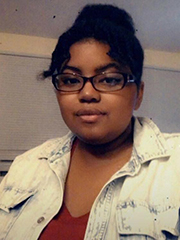
Academics, Well-Being, and Online Learning in 2020
Previous research has shown that online learning can sometimes lead to lower academic performance. One possible reason is that online learning often requires more student independence and self-motivation, which might be easier for people with higher academic self-efficacy. The pandemic created an opportunity to study how a wide range of students responded to the switch to online learning. The purpose of this study is to examine students taking online classes and see if pandemic online learning has had a negative effect on academic performance, and whether this is related to students’ academic self-efficacy. For this research, learning experiences before the pandemic (from Fall, 2019) were compared to learning experiences during the pandemic (Fall, 2020). A group of 40 college students completed a questionnaire to assess their academic self-efficacy and GPA in 2019 and 2020. The results were mixed: Students reported that pandemic learning has negatively affected academic self-efficacy; students felt decreased ability to do things like motivate and stay organized for classes. However, academic performance did not decline as predicted, in fact most students reported either no change or a slight increase in GPA between 2019-2020. The pattern of results is discussed relative to RIT’s policy on flexible grading during the pandemic, and the possible link between self-efficacy and successful online learning.
Tiffany Willsey
Disability Identity Formation and Academic Success in College Students with Disabilities
Millions of people have disabilities in the United States, and every year more of them enroll in college. Colleges need to help these students succeed at the same rates as their peers because students with disabilities are more likely to struggle academically. Research has suggested that some students who qualify for support services do not use them. This study aimed to answer three questions: How do students, in general, feel the Covid-19 pandemic has impacted their learning in terms of their support, stress, and coping? Do students diagnosed with disabilities report different changes compared to students without disabilities? And, do students who qualify for services actually take advantage of services, and how does this relate to their academic success? Participants completed a survey about their academic performance and learning experiences, and ratings of support, stress, and coping, comparing Fall, 2019 and Fall, 2020. In addition, students diagnosed with a disability assessed their use of support services. Results showed that both groups of students reported significantly higher stress in Fall, 2020 than Fall, 2019. Both groups also reported the same changes in support: a significant decline in support by peers and professors, but no change in support by their family. Overall, results show that students are feeling increased stress and decreased support, which are important issues for RIT to consider in terms of student success and well-being.
Dane Sherman
Impact of Learner Interest on Active Learning Outcomes
Active learning techniques have previously been shown to increase student engagement with class material and improve academic performance outcomes. The effectiveness of these techniques may come from their ability to create intrinsic motivation to learn in students, otherwise known as learner interest. A student’s interest in the material has also been shown to improve both engagement and academic performance. This study investigated the shared ability of active learning techniques and existing learner interest to increase engagement and improve learning outcomes. Prior to watching a TED talk, 16 undergraduate students rated their interest in related subject areas. While watching, subjects used either the active learning technique of a concept map or passively watched. Scores on a 10-item quiz did not differ significantly between the learning conditions and showed no relationship with self-reported learner interest. Although there were relatively few participants in this study, this result was likely due to increased engagement from alternate sources such as the content and format of the talk itself.
Nuria Osman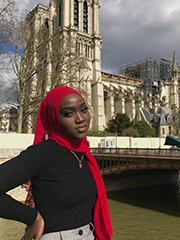
Trauma and Intimate Relationships: Traumatic Effects of Sexual Abuse
Trauma is known to significantly impact the life of an individual who experiences it. Many studies have found that early childhood trauma can affect communication and levels of trust among individuals in romantic relationships. This study investigated the impact of trauma, and in particular, childhood sexual abuse on intimacy levels. It was hypothesized that individuals who reported experiencing child maltreatment would display reduced intimacy in romantic relationships, with the lowest levels among those with child sexual abuse. Fifty-four Rochester Institute of Technology students were assessed using a short version of the Social Intimacy Scale and Childhood Trauma Questionnaire. Results indicated no significant differences in intimacy levels between those who experienced maltreatment and those who did not. This study was limited by a relatively small sample size. Future studies should investigate this using a larger and more diverse group of participants.
Victoria Pon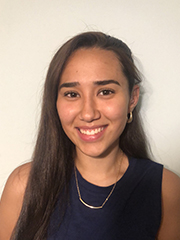
Remote Campus Activities and Student Connectedness
The current study examined whether academic remote activities were associated with students feeling more or less connected and explored the benefits of social media use during periods of remote learning. Previous researchers have found that students feel less connected when taking online classes, and some research has suggested that remote learning is not as effective. The hypothesis is that students in online classes will have a less interactive course experience (e.g., less interaction with faculty, other students). Less interactive course experiences will also be associated with feeling lonelier and less connected to courses. Students who report using social media more often will have more positive experiences. In the current study, 39 RIT college students participated and provided information on their social media use, experiences with online learning, and their feelings of connectedness and loneliness. After gathering results, online courses tended to be less interactive and there was a significant positive association between interactive classes and students feeling more connected. However, how interactive courses were rated as being was not associated with loneliness. There was also not a significant correlation between the frequency of students’ use of social media and their feelings of connectedness, loneliness, or academic performance. In conclusion, online courses may be less interactive and when the classes are less interactive, students feel less connected with others. However, social media use did not seem to impact connectedness, loneliness, or academic performance.
Team: Andrew England and Marissa Burkland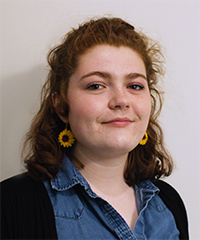

Advisors: Travis Stodtler, Rebekah Walker and Melissa War
DHSS Project Showcase
The RIT DHSS Project Showcase is a hub for the work done by students within the DHSS program. It is meant to be an easily accessible web page featuring DHSS projects, both completed and ongoing, as well as information about these projects. Previously developed as a unique website, coded entirely from scratch, the showcase was re-conceived this year to deploy the newly released CBOX Open Lab, a version of Commons in a Box open digital platforms for teaching, learning and collaboration. This free and open-source software is a digital commons developed specifically for Digital Humanities programs by a team at CUNY and offers opportunities for faculty members, departments, and entire institutions to create commons spaces for open learning. The new showcase offers key features: the site is more collaborative than before, allowing members of the RIT DHSS community to contribute directly to the showcase without having to go through a site administrator. This means that even with minimal upkeep, the site can continue to be updated in the future. Additionally, it incorporates course information, curriculum and program guidelines, and other community-based contributions into the space where projects are shared and celebrated.
Team: Michele Fensken, Marissa Burkland, and Andrew England
Advisors: Bryan French and Rebekah Walker
Rapids Cemetery Virtual Tour
The Rapids Cemetery has a long and storied history in Rochester, NY, but had, unfortunately, fallen into neglect. A Rapids Cemetery Restoration Committee formed and has taken it upon themselves to clean up and rediscover the history of this cemetery. Part of this process of restoration was working with RIT iSchool students to develop virtual tour opportunities and imagine potential website approaches. Now ready for new levels of interactivity and in need of a complete website to educate and aid visitors in navigating the cemetery, the committee worked with a DHSS capstone team to develop, design and implement their vision. The team created a website with full functionality, including the virtual tour, areas of interest, nearby historical sites, primary historical sources, and a new layout and design. Reconceiving all components and functionality in a user-friendly WordPress framework provides the Restoration Committee with the ability to update, debug, and modify the site autonomously in the future. The fully operational site is accompanied by a thorough and adaptable admin-user guide, empowering stakeholders to fully own their digital showcase and to further the cause of this restored, community gem.
 Team: Chelsea Aleong, Forrest Ciminelli, Juan Cintron, and Michael Lipari
Team: Chelsea Aleong, Forrest Ciminelli, Juan Cintron, and Michael Lipari
Advisors: Advisors: Dr. Amit Ray and Dr. Anne Royston
Digital Time Capsule
The DHSS Time Capsule documents the experiences of students during a particularly stressful year. Valuable as a memorial of human experience in any given time period, this time capsule focuses on the years of its creation, 2020-2021, with its particularly difficult context of the COVID-19 pandemic and the adaptations of students in the ever-changing, remote learning environment. Documenting this historic year from a unique perspective can illuminate the state of the institutions upon which we rely, strategies taken by students to adapt, and the state of students' mental health. Deployed as a website that was conceptualized, designed and implemented to capture, represent and immortalize our experience, the team used the Wordpress platform to share community feedback via audio recordings, written testimonies and social media contributions.
Team: Tyler Feliciano and Tyler Grobman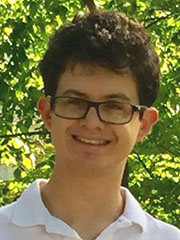
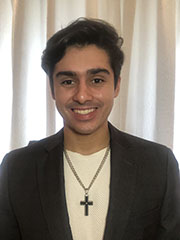
Advisor: Brett Reilly
Esports Development Package
This project aims to properly facilitate the creation and organization of a basic Esports program for Gracepoint Gospel Fellowship, a local religious group with a focus on community engagement. They wish to incorporate virtual events due to the circumstances brought about by the Covid-19 pandemic, and invited the team to establish a brand new Esports program for their use. The DHSS Capstone Esports team produced: an instructional guide for Esports marketing, development, and event construction; media campaign strategy guidelines; and advertisement strategy guidelines. Working closely with Gracepoint to articulate their specific needs, the team additionally produced custom media assets, in the form of picture and video, created for Gracepoint to use in conjunction with the media campaign and advertisement strategies.
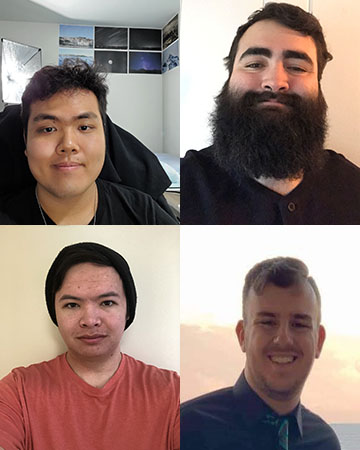 Team: Oojin Ji, Nic Bove, Chris Eng, Brenden Jezuit
Team: Oojin Ji, Nic Bove, Chris Eng, Brenden Jezuit
Advisors: Joe Geigel and Ihab Mardini
3D Asset team: Congrong Li, Spencer Kohrt, Annan Su
Virtual Reality Planetarium
The VR Planetarium was conceived, designed, calculated and constructed to deploy mathematical data about the stars into a virtual reality planetarium. The goal is an accessible environment to view the stars, irrespective of common obstacles such as cloud cover, light pollution, or geographical location. Developed in the Unreal Engine using the HYG Star Database, the program plots the stars in live time to create a realistic and mathematically accurate view of the stars as seen from earth. Collaborating with Professor Mardini’s 3D Design students who contributed additional environmental assets, the team created a virtual world in which any user can experience space unimpeded.
Session begins at 2:30 p.m. | Register to attend: http://cglink.me/2d1/r993664
 Quinn Sekreta
Quinn Sekreta
Economics and Privacy Policy: Potential Inefficiencies in the Labor Market
My Capstone will present a model of the Economic, primarily monetary, costs and benefits of privacy as it applies to an employee participating in the labor market. I will show that without privacy, there will be additional costs to participating in the market. If your employer knows you are looking for a new job with a higher salary but do not receive an offer, you risk being replaced, losing out on potential future raises, or facing some other negative repercussion. Should your employer know you cannot find a higher paying job, they know there is no reason to give you a raise. If you find an opportunity that pays more you can either take the offer to your employer and ask for a raise, or switch jobs. With the ability to choose to participate in the job market privately, you can tailor your actions to maximize your income. The market will behave efficiently since you have the ability to apply to new jobs without risking retribution, and your employer will pay you your value to the firm. Without the ability to conceal your job search, an individual risks lower lifetime earnings because their ability to negotiate their salary is reduced if the employer has credible information that there is no job which will pay more for your labor. Access to privacy is in both the employee’s interest and the firm’s interest because privacy reduces inefficiencies, there will be more applicants to a job posting, and the firm can hire the best individual.
 Brenna Multala
Brenna Multala
Encouraging Sustainable Textiles in a World of Fast Fashion
As a college student, I know the importance of making economic decisions regarding what I spend my money on; this inevitably includes spending money on clothing. The issue with textile companies nowadays is that clothing is not as durable as it was in the past. Instead, there is rapid turnover with new styles that arrive nearly every week. This is the phenomenon commonly known as ‘fast fashion.’ But with higher turnover rates comes higher environmental impact. This research explores policy options that can help consumers and firms choose more sustainable options. A particular policy that is of current interest in academic literature, as well as in the industry, is the promotion of clothing libraries as a version of collaborative consumption. A mathematical economic model was developed to show how clothing libraries can raise sustainability in the textile industry. This research on promoting environmentally friendly textiles helps consumers purchase items from companies that are more aligned with their moral compass.
 Ben Blakley
Ben Blakley
On the Methods to Protect Privacy and Manage Accuracy
Privacy is an important topic in today's world with many social media platforms passively collecting your data. Protecting privacy can be seen to have effects on the accuracy which is defined as the conclusions of the data. The methods used to examine this inefficiency can be observed through a resource allocation problem. Negative externalities, such as personalized pricing are also used to explain the inefficiency in the market. It was found to be optimal to alter the data through an algorithm by making slight but significant changes to the data. It also was found through research that an opt-out method that allows consumers to allow how their data is collected creates an efficient market. A policy that supports how consumers control how their data is used and collected is presented as optimal.
 Michael Hinz
Michael Hinz
Managing Path Dependence in Conventional Pollution Control Technologies
The adoption of relatively green technologies in industry is hindered by the firm’s preference to continue using and researching traditional technologies. This persistent preference for the established technology, known as path dependence, yields outcomes with higher than optimal levels of emissions and the damages are therefore higher than would be socially optimal. The lower abatement rate and higher social cost of this outcome is not socially efficient, but through a cost minimization analysis, the effects on abatement and green technology research and development investment effort can be combatted through existing mechanisms to bring about more socially optimal outcomes. Analysis of a two-technology system suggests that more socially optimal outcomes may be achieved through means such as subsidies, which would encourage the firms to pursue more green technology investment, and through information sharing which will decrease the firm’s inclination to continue to use what they know.
Session begins at 2:30 p.m. | Register to attend: http://cglink.me/2d1/r993664
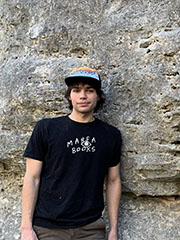 Noah Collins
Noah Collins
A Bibliometric Analysis of the Eclipse Narrative in American Philosophy
Philosophical pragmatism originated in the United States in the late 19th century. Some historians of philosophy have described the history of American pragmatism in terms of an “eclipse narrative”: dominant in the early 20th century, followed by a mid-century decline and, eventually, a late-century resurgence. Defenders of this narrative often point to the influx of European philosophers around WWII, and the rise of “analytic” philosophy, as the main reasons for pragmatism’s initial eclipse. While the eclipse narrative is common in the philosophical literature, it is not without controversy. Unfortunately, the contemporary debate tends to rely on anecdotal evidence and contested lines of influence between prominent philosophers. My approach in this thesis is uniquely different. I instead approach the history of pragmatism empirically by using modern bibliometric techniques on a large data set of papers (nearly 90,000 in all) to track the mentions of salient words connected to American pragmatism over several decades. This allows us to determine what American philosophers were actually talking about and when they were talking about it. My method provides a valuable perspective into a contemporary debate in the history of philosophy and, I conclude, is very much in the spirit of pragmatism itself.
 Jonathan Schnaufer
Jonathan Schnaufer
The Pursuit of Virtue in Outdoor Sport and Recreation
This thesis presents for consideration six virtues that can be used to determine how adventure sports, outdoor recreation and expeditions can maintain their integrity when their methods are challenged by novel influences. Sports must adapt to social change, such as cultural, technological, or monetary influences. When they do so, mountaineering and adventure sports should be guided by ethical and aesthetic values that I argue can be maintained by adhering to the virtues of collaboration, education, athleticism, stewardship, sport empowerment and temperance. Some methods of pursuing these activities have alienated athletes from the natural component of outdoor sports and have moved toward aiming to control the environment rather than seeking to achieve human excellence in collaboration with nature. Further, using and accessing support and assistance strains the moral integrity of the activity and the unique value of accomplishments. In some cases, athletes have shifted their values toward prioritizing being first or completing an achievement by any means necessary. I examine how this has undermined the value of outdoor pursuits. The implication of a competitive ethos and the acceptance of high levels of assistance is that some past and modern achievements and expeditions have yielded unethical accomplishments that compromise the integrity of the sport.

